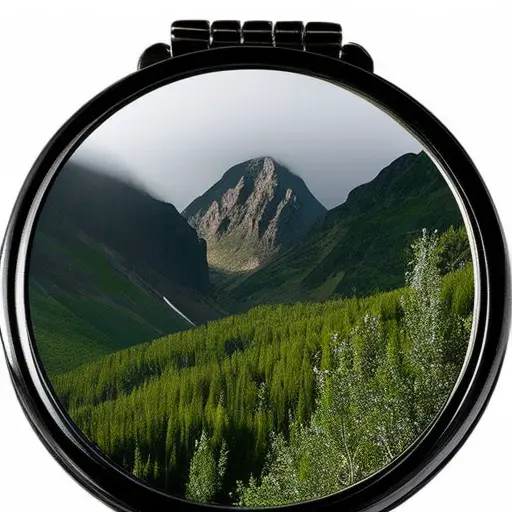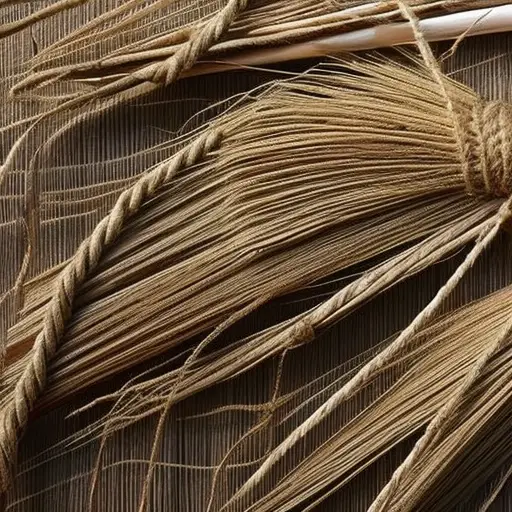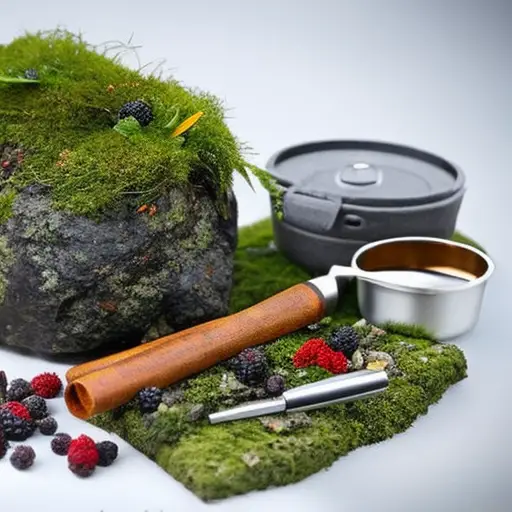How to Maintain and Sharpen Survival Knives

Did you know that a dull knife is more dangerous than a sharp one? According to a study conducted by the National Institute for Occupational Safety and Health, dull knives are responsible for a higher number of accidents and injuries.
In this article, we will explore the importance of regular maintenance for survival knives and provide practical tips on cleaning, lubricating, and sharpening techniques. By following these expert suggestions, you can ensure your survival knife remains in optimal condition for all your outdoor adventures.
Importance of Regular Maintenance
Regular maintenance is crucial for ensuring the optimal performance and longevity of survival knives. By regularly maintaining your survival knife, you can reap the benefits of improved knife longevity and edge retention. Proper techniques for maintaining knife edge retention are essential to keep your knife performing at its best.
Regular maintenance not only extends the lifespan of your survival knife but also ensures that it remains sharp and ready for any task. A well-maintained knife is more efficient and safer to use. It minimizes the risk of accidents caused by a dull blade that requires excessive force to cut or puncture.
To maintain knife edge retention, it is important to regularly clean and dry the blade after use. This prevents corrosion and buildup of debris, which can dull the edge. Additionally, proper storage is crucial to avoid unnecessary wear and tear. Storing the knife in a dry and secure sheath or container protects the edge from damage.
Another important aspect of maintenance is sharpening the knife regularly. Using a sharpening stone or a honing rod, you can achieve and maintain a sharp edge. Regular sharpening not only enhances the knife’s performance but also improves its longevity.
Essential Tools for Knife Maintenance
When it comes to maintaining and sharpening survival knives, having the right tools is essential.
There are various knife sharpening techniques that can be used, such as using a sharpening stone or a honing rod.
Additionally, there are several must-have maintenance accessories, including a knife oil or lubricant, a cleaning cloth, and a knife sharpener.
These tools are necessary for keeping your survival knife in optimal condition and ensuring its longevity and effectiveness in any survival situation.
Knife Sharpening Techniques
To effectively maintain and sharpen survival knives, it is imperative to utilize the appropriate tools for knife maintenance. When it comes to knife sharpening techniques, two essential tools that every knife owner should have are a wet stone and a honing guide. These tools will help you achieve a razor-sharp edge on your survival knife.
Here are three sub-lists explaining the importance and usage of these tools:
-
Wet Stone:
- A wet stone is a sharpening tool that requires water to lubricate the surface and prevent overheating.
- It provides a consistent and controlled sharpening surface for your knife.
- Wet stones come in different grits, allowing you to choose the appropriate level of coarseness for your knife.
-
Honing Guide:
- A honing guide is a device that holds the knife at a specific angle during sharpening.
- It ensures consistent and accurate sharpening, especially for beginners.
- With a honing guide, you can easily maintain the correct angle and avoid uneven sharpening.
Must-Have Maintenance Accessories
One essential tool for knife maintenance is a sharpening stone, which helps to keep survival knives in optimal condition. A sharpening stone is a block of abrasive material that is used to grind and sharpen the blade of a knife. It is important to choose a sharpening stone that matches the type of blade you have, as different materials require different grits for effective sharpening.
In addition to a sharpening stone, other must-have maintenance accessories for knife sharpening and blade care include a honing rod, which is used to straighten the edge of the blade and maintain its sharpness, and a lubricant such as honing oil or water, which helps to prevent friction and ensure smooth sharpening.
These tools are essential for maintaining the performance and longevity of your survival knife.
Cleaning and Lubricating Your Knife
Proper maintenance of a survival knife involves regular cleaning and lubrication to ensure its optimal performance and longevity. To effectively clean and lubricate your knife, follow these steps:
-
Cleaning:
-
Start by wiping off any debris or dirt from the blade using a soft cloth or brush. Be sure to remove any particles that may have accumulated on the cutting edge.
-
For tough stains or rust spots, use a mild detergent or vinegar solution and a scrub brush. Gently scrub the affected areas, being careful not to scratch the blade.
-
Rinse the knife thoroughly with warm water to remove any residue from the cleaning solution.
-
Dry the knife completely using a clean cloth to prevent moisture from causing rust or corrosion.
-
Lubrication:
-
Apply a thin layer of lubricant, such as mineral oil or knife oil, to the blade and pivot points. This will help reduce friction and prevent rust.
-
Use a cotton swab or cloth to evenly distribute the lubricant and remove any excess.
-
Pay special attention to the folding mechanism and locking mechanism, ensuring they move smoothly and without resistance.
By regularly cleaning and lubricating your knife, you not only maintain its performance but also extend its lifespan.
Now, let’s move on to discuss sharpening techniques for survival knives.
Sharpening Techniques for Survival Knives
When it comes to sharpening survival knives, two important factors to consider are the angle and pressure applied during the sharpening process.
The angle at which you hold the knife against the sharpening tool will determine how sharp the blade becomes, while the pressure you exert will dictate how quickly material is removed.
Additionally, selecting the right sharpening tool, such as a whetstone or a sharpening system, is crucial for achieving the desired results.
Angle and Pressure
To achieve optimal sharpening results for survival knives, it is essential to carefully control the angle and pressure applied during the sharpening process.
Proper angle adjustment ensures that the knife’s edge is sharpened uniformly and at the desired level. Different knives may require different angles, so it is important to refer to the manufacturer’s guidelines or experiment with different angles to find the best one for your knife.
When it comes to pressure control, it is crucial to maintain a consistent and even pressure throughout the sharpening process. Applying too much pressure can lead to excessive material removal and damage the knife, while too little pressure may result in an ineffective sharpening.
Remember to maintain a steady hand and apply just enough pressure to achieve the desired sharpness.
Sharpening Tool Selection
Achieving optimal sharpening results for survival knives requires careful selection of the appropriate sharpening tools and techniques. When it comes to knife sharpening methods, there are various options available for survival knife owners. One important decision to make is whether to use a honing or sharpening tool. Honing is the process of realigning the knife’s edge, while sharpening involves removing material to create a new edge. Both methods have their merits and should be chosen based on the specific needs of the knife.
To assist in the selection process, the table below provides a comparison of honing and sharpening tools:
| Honing Tools | Sharpening Tools |
|---|---|
| Honing Rod | Sharpening Stone |
| Honing Guide | Electric Sharpener |
| Ceramic Rod | Diamond Stone |
| Leather Strop | Bench Grinder |
| Belt Sander |
Testing and Assessing Knife Sharpness
One way to determine the sharpness of a survival knife is by conducting a thorough assessment of its cutting performance. This step is crucial to ensure that your knife is capable of performing the tasks required in a survival situation.
To accurately assess the sharpness of your knife, you can employ various testing techniques and knife sharpness assessment methods, such as:
-
Paper Cutting Test:
- Hold a piece of paper in one hand.
- Slowly and smoothly draw the knife across the paper.
- A sharp knife will effortlessly slice through the paper with a clean cut, while a dull blade will tear or snag the paper.
-
Hair Shaving Test:
- Take a strand of hair and hold it taut.
- Gently press the knife against the hair and try to shave it.
- A sharp knife will easily cut through the hair, leaving a clean shave, while a dull blade will struggle or fail to cut.
-
Tomato Slicing Test:
- Grab a ripe tomato and hold it steady with your non-dominant hand.
- Use the knife to slice through the tomato in a smooth, continuous motion.
- A sharp knife will effortlessly slice through the tomato’s skin and flesh, while a dull blade will crush or squish the tomato.
Storing and Protecting Your Survival Knife
Proper storage and protection of your survival knife is essential to ensure its longevity and functionality. When it comes to protecting knives, there are a few key factors to consider. First, always clean and dry your knife before storing it. Moisture can lead to rust and corrosion, which can greatly diminish the lifespan of your blade. Secondly, find a suitable storage option that keeps your knife secure and protected. Here is a table showcasing some popular knife storage options:
| Storage Option | Pros | Cons |
|---|---|---|
| Knife Roll | Portable, holds multiple knives | May take up space and be bulky |
| Knife Block | Keeps knives organized and easily accessible | Limited capacity |
| Knife Sheath | Offers individual protection for each knife | May be less secure for storage in long term |
Frequently Asked Questions
Can I Use Regular Household Tools for Knife Maintenance?
Using regular household tools for survival knife maintenance can be done, but it is not ideal. While it may save money, it can also lead to improper sharpening and potential damage to the knife. It’s recommended to use specialized tools for optimal results.
How Often Should I Clean and Lubricate My Survival Knife?
Regular cleaning and lubrication are crucial for maintaining the performance and longevity of a survival knife. The frequency of maintenance depends on usage and conditions. Proper lubricants, such as mineral oil or specialty knife oils, should be used for optimal results.
Is It Necessary to Test the Sharpness of My Survival Knife After Sharpening?
Testing the sharpness of a survival knife after sharpening is necessary to ensure optimal performance. One can test sharpness by performing various tasks such as slicing paper, shaving hair, or conducting a "thumb push" test.
What Should I Do if My Survival Knife Gets Wet or Submerged in Water?
When a survival knife gets wet or submerged in water, it is crucial to properly dry it to prevent rust. Start by wiping it dry with a clean cloth, then using a towel or hairdryer on a low setting. Apply a thin layer of oil to protect the blade.
Are There Any Specific Safety Precautions I Should Take While Sharpening My Survival Knife?
When sharpening a survival knife, it is vital to follow proper handling and safety precautions. Familiarize yourself with different sharpening techniques and use the appropriate tools to maintain the knife’s edge effectively and prevent accidents.
Conclusion
In conclusion, regular maintenance and sharpening of survival knives are essential for their optimal performance and longevity. By using the right tools, cleaning and lubricating the knife, and employing proper sharpening techniques, one can ensure that their survival knife remains in top condition.
Testing and assessing the knife’s sharpness, as well as storing and protecting it properly, are also crucial steps in maintaining a reliable and effective tool for survival situations.





